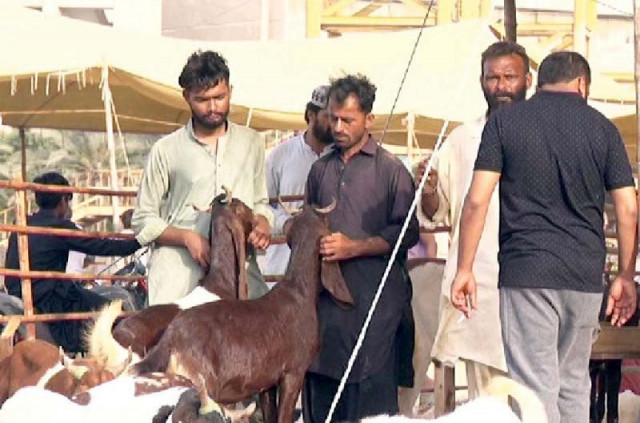Paucity of slaughterhouses exacerbates pollution
Citizens slaughter animals all across the city, paying no heed to cleanliness

As Eid-ul-Azha approaches and citizens hustle through cattle markets in search for the perfect sacrificial animal, the dire unavailability of designated slaughterhouses in the port city, foresees a nauseating aftermath, one marked by bloody streets and a rancid atmosphere.
Despite the provincial government announcing several proclamations aimed at improving the level of hygiene in the city during the three-day sacrificial period, the on-ground state of cleanliness remains repugnant each year since no slaughterhouses exist for citizens to fulfil their religious obligations in a sanitary manner, leading a large majority to sacrifice their animals out in the open; only to leave behind the carcasses and coagulated blood which aggravates land and air pollution in the city.
“Most people leave the carcass, discarded organs, and waste matter of their sacrificed animals outside their homes after performing their obligation. If only the government could set up temporary spaces for people to offer their sacrifices, many neighbours like me would be spared the agony of living with such filth around their homes,” resented Hassan Abbas, a resident of a private housing society.
According to Muhammad Toheed, an urban planner, Karachi is one of the largest cities in the country, but sadly, there are no slaughterhouses for animal sacrifice in it. “Slaughterhouses are present in every major country of the world, populated by Muslims. Unfortunately, this is not the case in Karachi where people are forced to offer sacrifices indoors, outside their home, on roads, around highways and even in public places, leaving the remains of dead animals lying around for days to come,” expressed Toheed. Mohammad Nadeem, a volunteer, agreeing with Toheed, claimed observing a similar trend among citizens pertaining to cleanliness during Eid.
“The waste of dead animals is extremely unhygienic and can cause multiple diseases. The government should launch a campaign to create awareness among citizens about the importance of cleanliness after sacrifice,” said Nadeem. “I would request citizens to place lime around the area where the sacrifice was made and to transport the waste matter to the designated places so that cleanliness can be maintained,” urged Junaid Afzal, Councillor at a local union committee.
However, some locals like Fahad Siddiqui, a resident of the Federal B Area, feel that sending out occasional public service messages on cleanliness only during the Eid season will not help much and a more comprehensive approach was required to inculcate the habit of cleanliness among citizens from a young age. “A dedicated curriculum on cleanliness and hygiene should be introduced in schools by the local government so that our children are aware of the significance of keeping their surroundings clean and grow up to become responsible citizens,” advised Siddiqui, who resented the state of hygiene in the city following Eid-ul-Azha. Speaking to The Express Tribune on the matter, provincial Minister for Local Governments, Syed Nasir Hussain Shah, assured that he had sent out instructions to all local government departments and concerned agencies to complete the cleaning process in a timely manner during the Eid holidays period.
When inquired about the construction of slaughterhouses, Shah responded, “the establishment of slaughterhouses may be a good plan, but before that citizens must show a sincere willingness to abide by the rules and utilise these spaces for sacrifice in the event that they are provided.”


















COMMENTS
Comments are moderated and generally will be posted if they are on-topic and not abusive.
For more information, please see our Comments FAQ